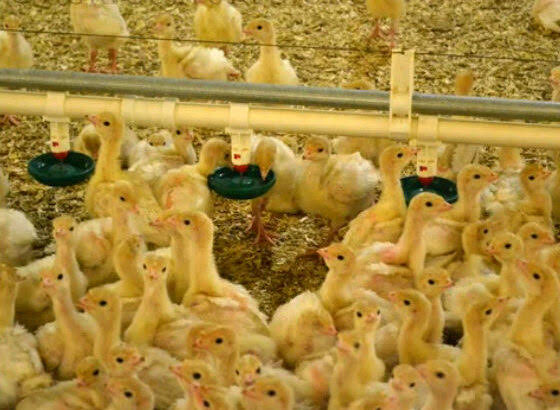Practical First Week Management of Turkey Poults
The importance of providing optimal brooding conditions is highlighted by its influence on post-hatch gut development, which if impaired during the first two weeks of life, can permanently limit the absorptive capacity of the gut.
The first few hours and days of a turkey poult are therefore the most significant period of its life and have a long-term influence on its capacity to fulfill its maximum health, welfare, growth and economic potential, evidence of which can be seen in the commercial world as increased egg and meat production. This stage of the bird’s life if well managed with attention to detail, will be time and effort well spent.
 Learn More
Learn More
House preparation
Preparing a house for a new flock of turkeys starts as soon as the last one has depleted. Remove the old litter then wash down and disinfect using a well-managed professional cleaning team. All chemicals should be approved diluted and handled in accordance with the manufactures instructions. Washing of the house and equipment must be carried out thoroughly as any remaining organic matter has a major negative impact on disinfectant performance. After disinfecting and before new litter has been placed, the houses should have environmental swabs taken and visual inspections made to ensure good quality cleaning is maintained, in order to reduce the risk of pathogen challenges from one flock of birds to the next.
All foot dips/disinfectant mats and biosecurity measures should now be re-introduced to maintain a “clean” pathogen free environment within the houses. Water lines/header tanks should be drained and cleaned using an approved cleaning product such as a peracetic acid based product. At this point any maintenance or servicing to the house or equipment should be carried out.
Fresh high quality litter should now be laid on dry floors at a depth of a minimum of 7cm in hot weather and 10cm in cold weather. This depth of bedding stops the poult from the chilling effect of the cool concrete floor beneath, so maintaining a warm thermal comfort for the poult. Hard wood or wet sawdust should not be used. It may be necessary to apply a secondary disinfectant via a thermal fogging application after the bedding has been spread and the house prepared for poult arrival this will depend on recent health status, age and condition of the houses.
READ ALSO: HOW TO TREAT YOUR CHICKENS IF YOU HAVE WORM INFESTATION
House set-up
There are two ways to set up a house ready for day old poults 1; Spot brooding (Figure 1), where the poults are kept in rings for up to 5-7 days (commonly used for rearing breeding stock poults) or 2; Whole House brooding (Figure 4), where poults are allowed a much larger area to spread, with nearly all or all of the floor space utilised for brooding which is commonly used for commercial poult rearing. As for both systems the references laid out in this article are all equally important but the larger the brooding area the greater the pressure on the poults immediate environment (temperature, light, ventilation, feed and water). For this reason Aviagen Turkeys Ltd would advise smaller brooding flock sizes, if practical and economic.
1. Spot brooding:
The ring size depends on the heat output of the brooder but in general the ring needs to be approx. 4m in diameter with a brooder that delivers a temperature range of 40 °C degrees in the middle and 28 °C at the edge (Figure 2). To achieve these temperatures the brooder can be raised or lowered accordingly. The surround can be of a solid material such as cardboard which is generally used in cooler countries or a mesh that is used in warmer climates. Height of the surround should be 45cm.
The fewer poults in a ring and the less competition between poults will increase the chance of a good start. As a general rule, each ring should contain no more than 270 male poults or 290 female poults.
Within the ring there should be at least two feeding and drinking points per 100 poults, 50% of each can be of a supplementary type. Supplementary feeders can consist of a cardboard egg tray, plastic or cardboard tray.
READ ALSO: 8 Ways to Make your Poultry Products Stand Out
Whole house brooding:
Poults have access to a large area of floor space, therefore feed and water points need to be evenly placed across the floor area at the correct height. This usually means the permanent feeders and drinkers are positioned in lines the length of the house with supplementary feeders and drinkers in between, this ensures poults have minimum distance to travel to locate feed and water. As with spot brooding there should be a minimum of two feeders and drinkers to every 100 poults of which 50% can be supplementary.
To Be Continued In Part Two………….















